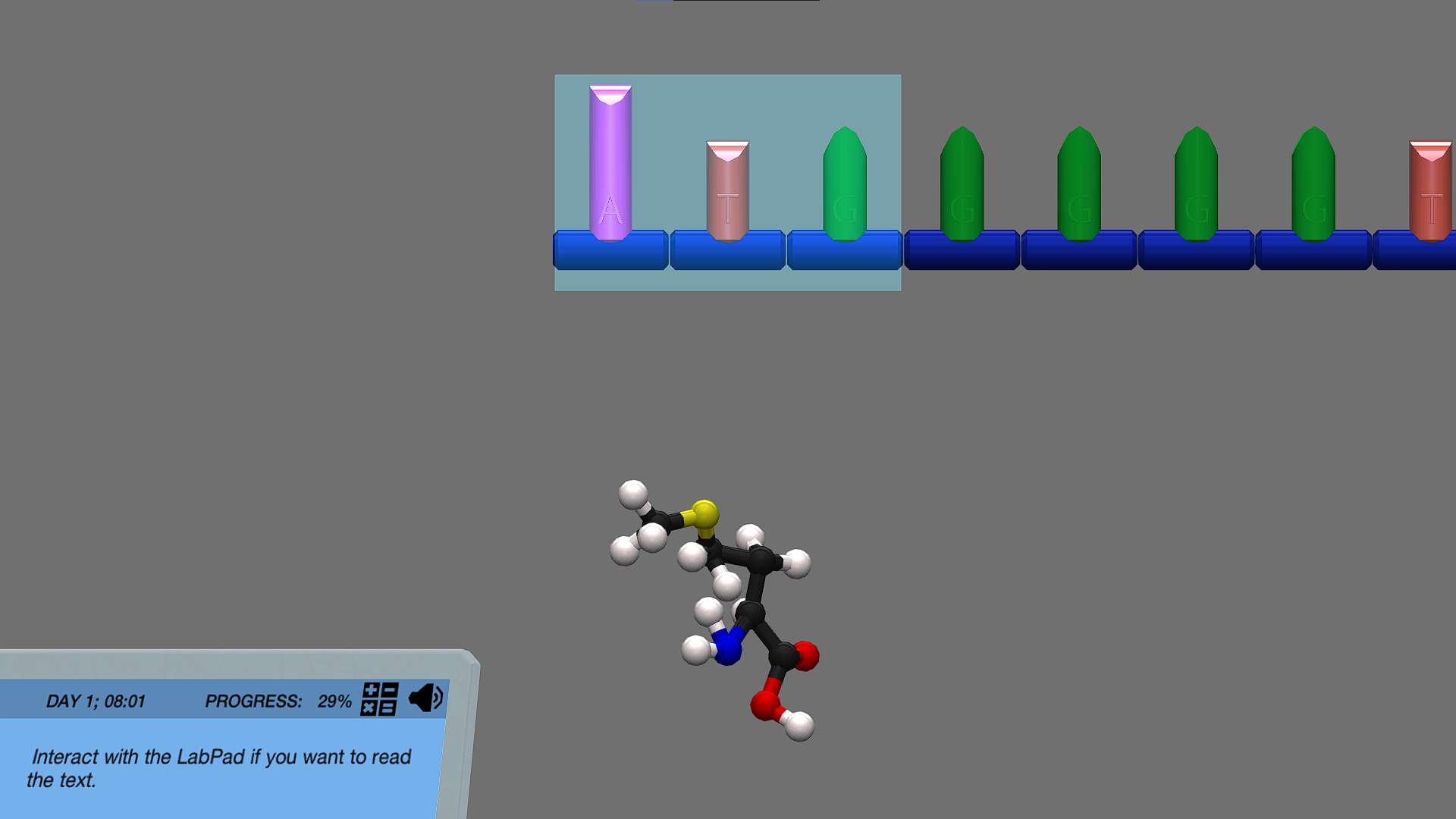Heading 1
Heading 2
Heading 3
Heading 4
Heading 5
Heading 6
Lorem ipsum dolor sit amet, consectetur adipiscing elit, sed do eiusmod tempor incididunt ut labore et dolore magna aliqua. Ut enim ad minim veniam, quis nostrud exercitation ullamco laboris nisi ut aliquip ex ea commodo consequat. Duis aute irure dolor in reprehenderit in voluptate velit esse cillum dolore eu fugiat nulla pariatur.
Block quote
Ordered list
- Item 1
- Item 2
- Item 3
Unordered list
- Item A
- Item B
- Item C
Bold text
Emphasis
Superscript
Subscript
About This Simulation
Explore the structure of proteins and learn about the synthesis process inside the cells.
Learning Objectives
- Understand the translation process from mRNA to amino acid
- Understand the protein synthesis processing in the ribosome
- Identify the primary, secondary, tertiary and quaternary structures of protein, and describe how they are related to each other
About This Simulation
Lab Techniques
- Protein synthesis
Related Standards
- High level content, may support HS-LS1-1
- Biology 1.3 Introduction
- to Biological Macromolecules
- Biology 2.7 DNA replication, transcription and translation
Learn More About This Simulation
This short, targeted simulation is adapted from the full-length “Protein Synthesis” simulation.
Discover how proteins are synthesized! In this simulation, you will learn about transcription of DNA to RNA, the translation of RNA to amino acids, and the formation of proteins from amino acids. You will also learn about the primary, secondary, tertiary, and quaternary structures of protein in a 3D animation. Do you know how a DNA sequence can be processed to synthesis a protein?
Study the transcription and translation processes
Begin by learning about the transcription process of DNA to RNA. Discover the translation process where an RNA sequence is read by a ribosome inside a cell and the corresponding to amino acids are made. With these two processes any protein can be made. How do the amino acids form different proteins?
Synthesis of proteins from amino acids
Find out how amino acids are assembled to make proteins. A 3D animation describes how triplets of codons in the RNA sequence are translated into amino acids. Observe how these amino acids are joined together by peptide bonds to create a polypeptide chain: this is the primary structure of a protein. Then watch as the primary structure is folded into secondary, tertiary and quaternary structures. Discover the two main types of secondary structure, and see an example of how the tertiary structure of a protein can be modified post-translation.
Review your knowledge
Put your knowledge of protein synthesis to the test in quizzes throughout the simulation. Do you know the difference between DNA and RNA? How is a protein synthesised in cells?
Boost STEM Pass Rates
Boost Learning with Fun
75% of students show high engagement and improved grades with Labster
Discover Simulations That Match Your Syllabus
Easily bolster your learning objectives with relevant, interactive content
Place Students in the Shoes of Real Scientists
Practice a lab procedure or visualize theory through narrative-driven scenarios


For Science Programs Providing a Learning Advantage
FAQs
Find answers to frequently asked questions.
Heading 1
Heading 2
Heading 3
Heading 4
Heading 5
Heading 6
Lorem ipsum dolor sit amet, consectetur adipiscing elit, sed do eiusmod tempor incididunt ut labore et dolore magna aliqua. Ut enim ad minim veniam, quis nostrud exercitation ullamco laboris nisi ut aliquip ex ea commodo consequat. Duis aute irure dolor in reprehenderit in voluptate velit esse cillum dolore eu fugiat nulla pariatur.
Block quote
Ordered list
- Item 1
- Item 2
- Item 3
Unordered list
- Item A
- Item B
- Item C
Bold text
Emphasis
Superscript
Subscript
Labster can be integrated within a school's LMS (Learning Management System), and students can access it like any other assignment in their LMS. If your Institution does not choose an LMS integration, students will log in to Labster's Course Manager once they have an account created. Your institution will decide the access method during the sales process.
Labster is available for purchase by instructors, faculty, and administrators at education institutions. Purchasing our starter package, Labster Explorer, can be done using a credit card if you are located in the USA, Canada, or Mexico. If you are outside of North America or are choosing a higher plan, please speak with a Labster sales representative. Compare plans.
Labster simulations are created by real scientists and designed with unparalleled interactivity. Unlike point and click competitors, Labster simulations immerse students and encourage mastery through active learning.
Labster supports a wide range of courses at the high school and university level across fields in biology, chemistry and physics. Some simulations mimic lab procedures with high fidelity to train foundational skills, while others are meant to bring theory to life through interactive scenarios.







.png?fm=jpg&w=700&h=400)
.png?fm=jpg&w=700&h=400)
.png?fm=jpg&w=700&h=400)







